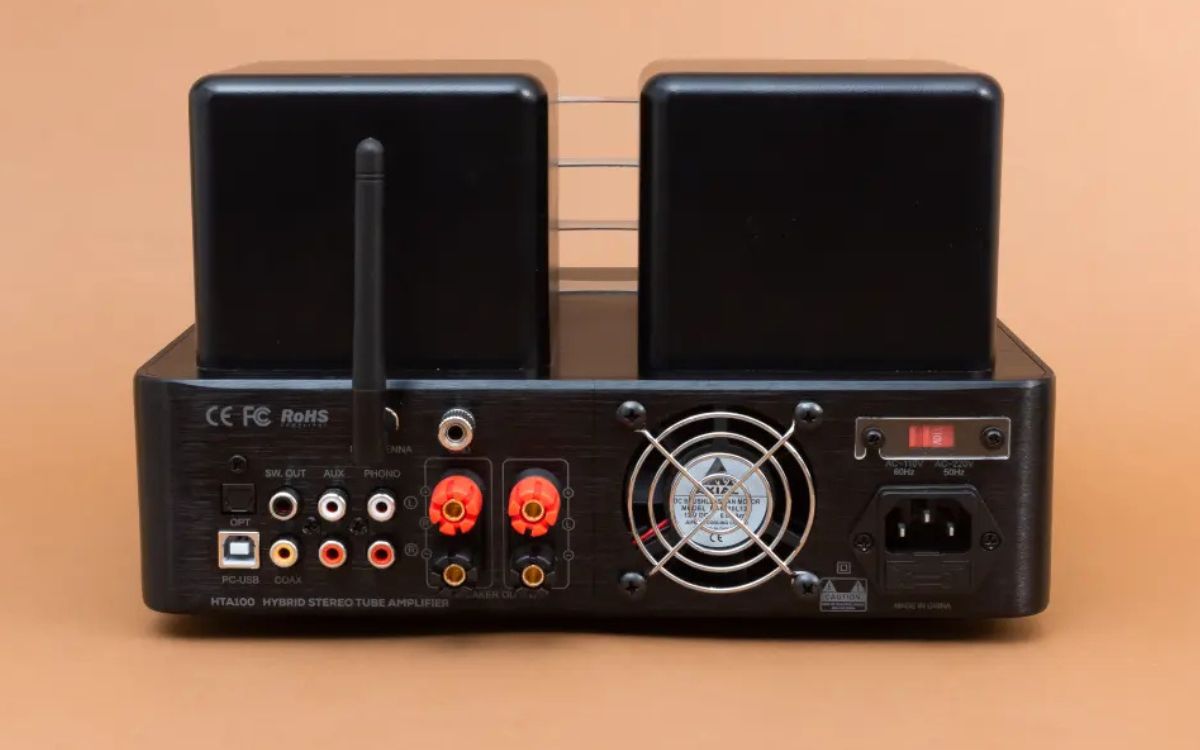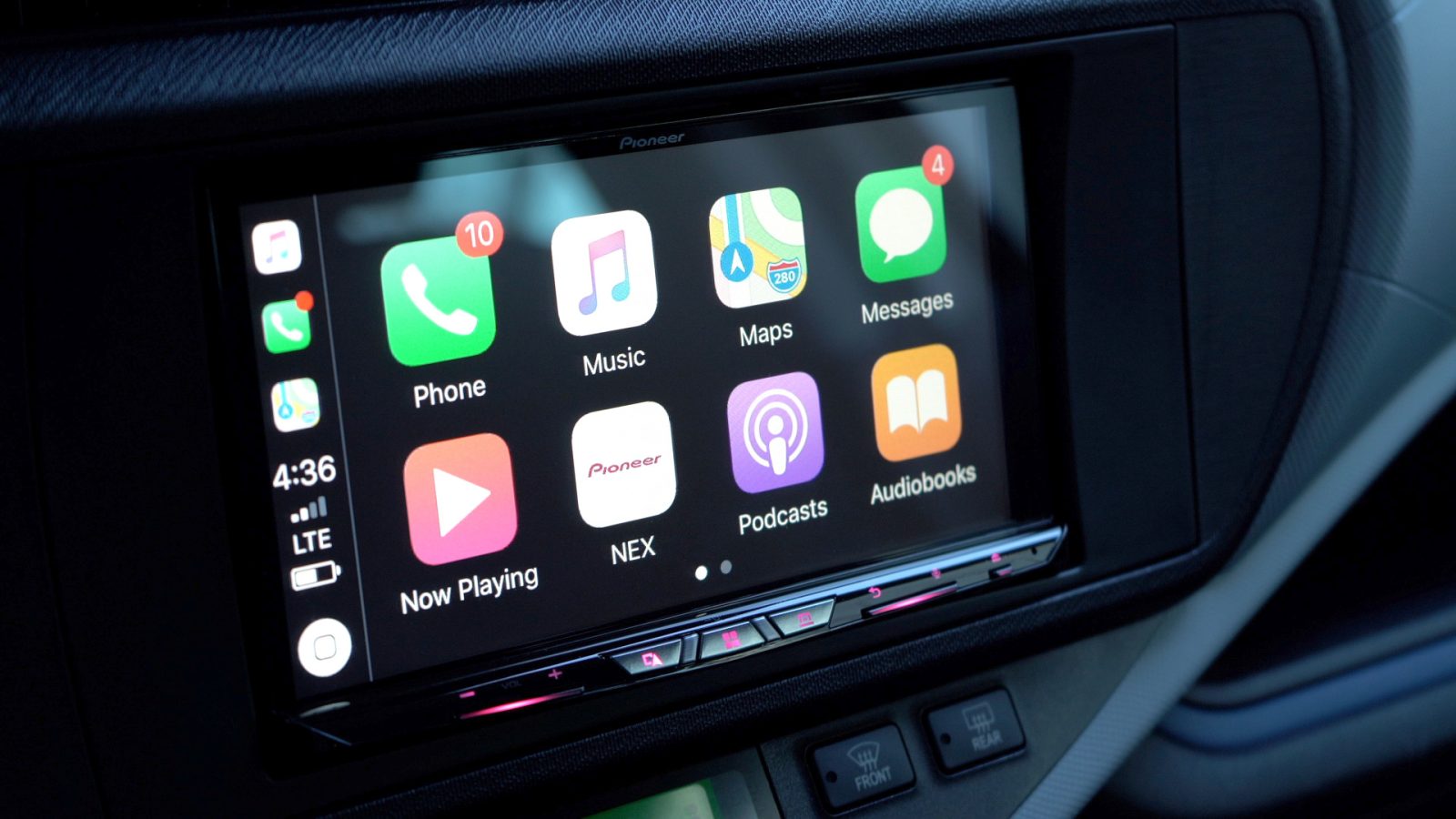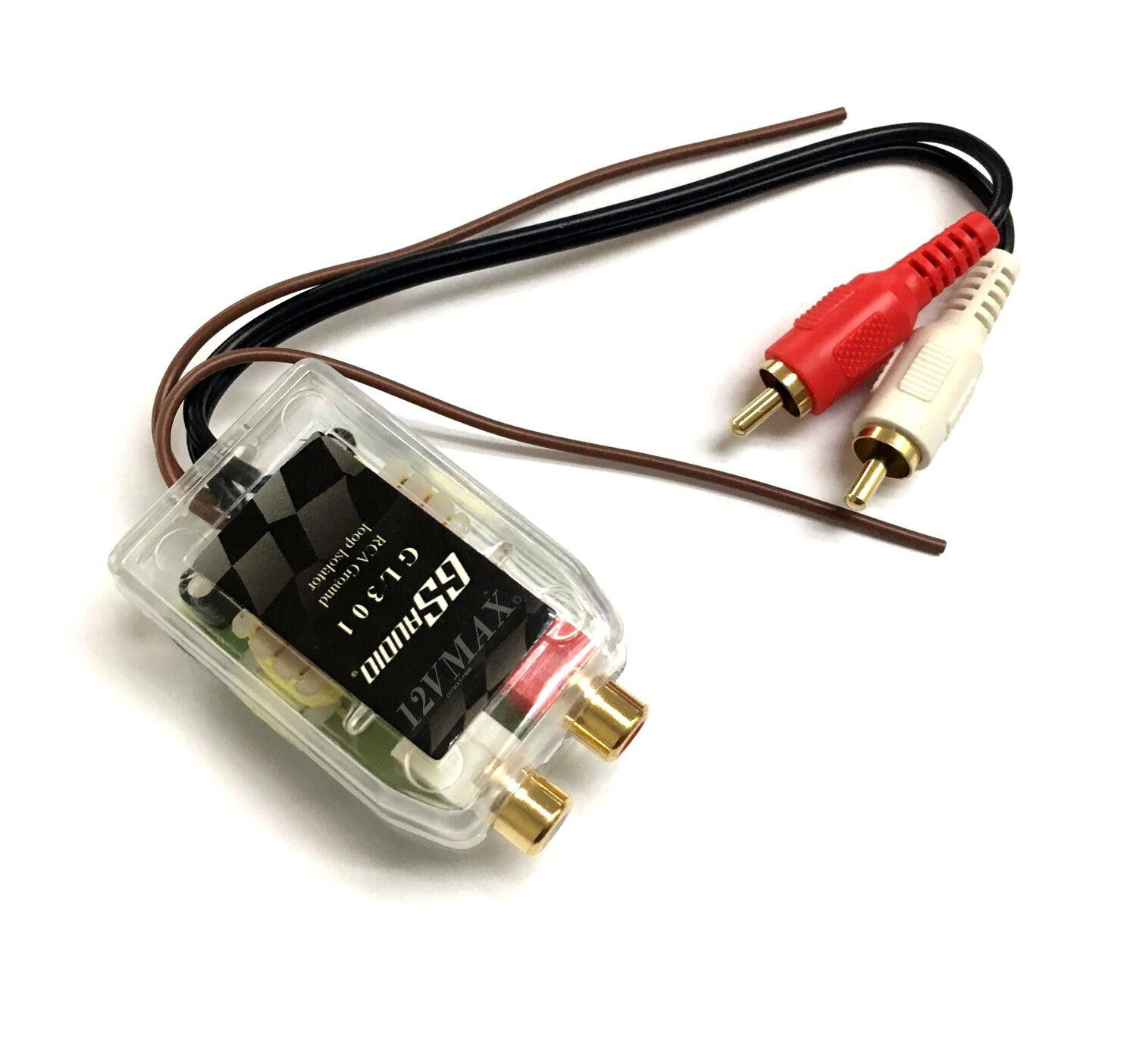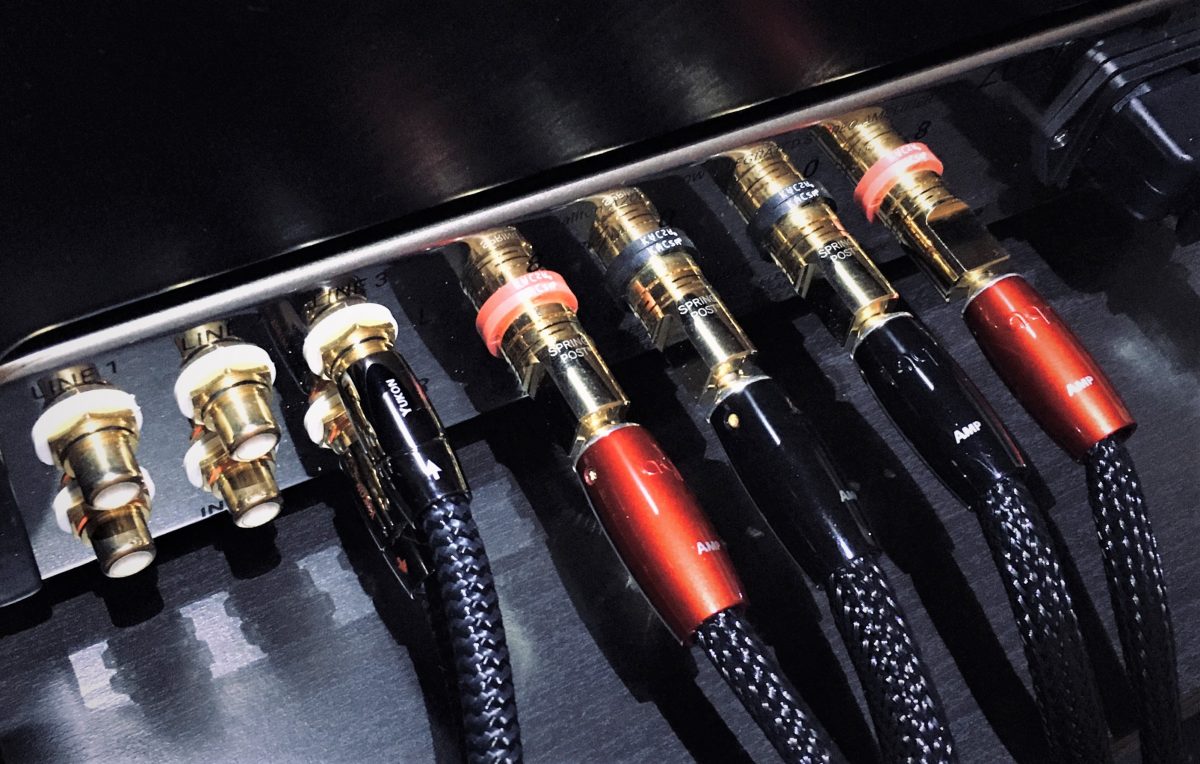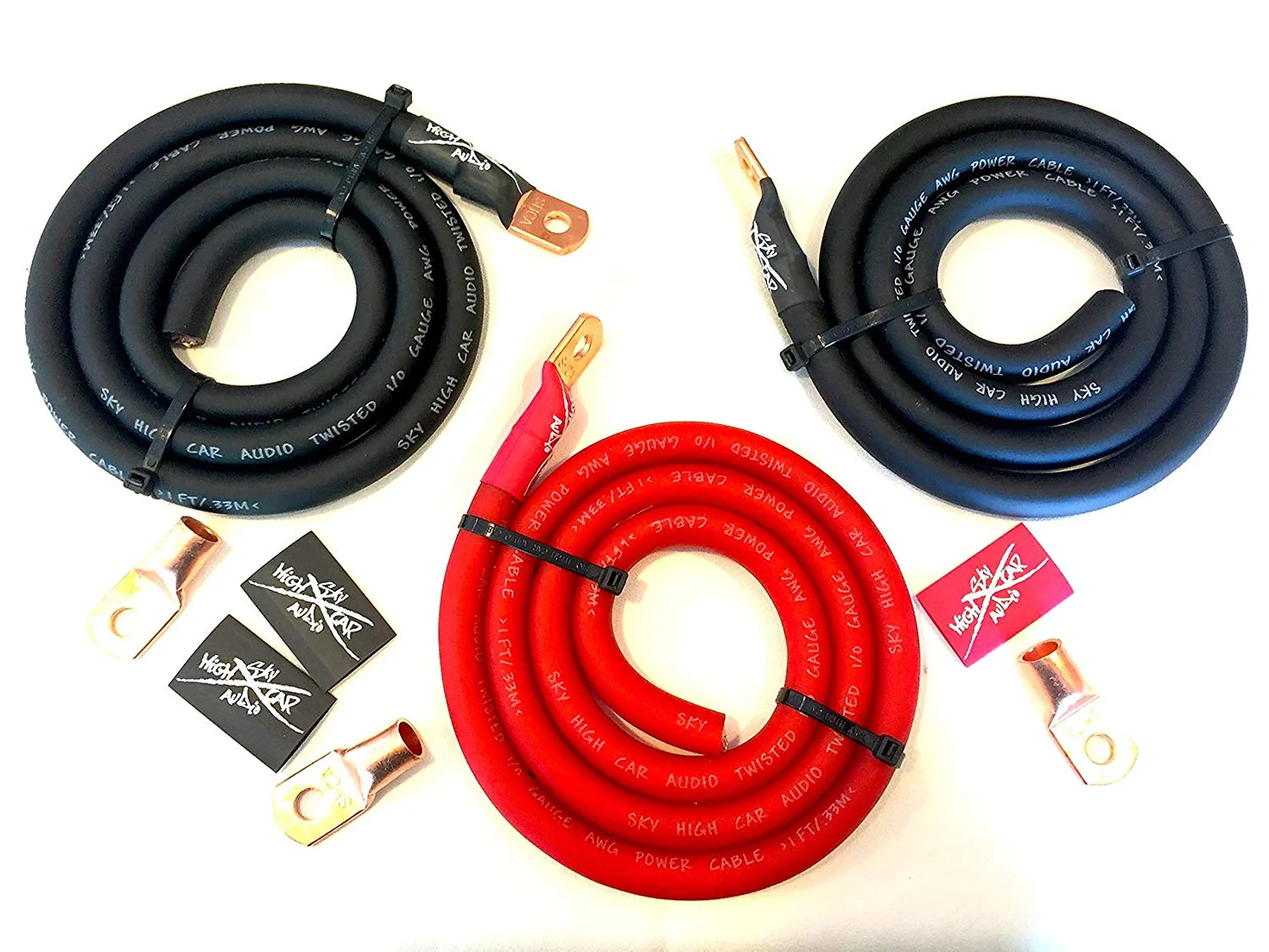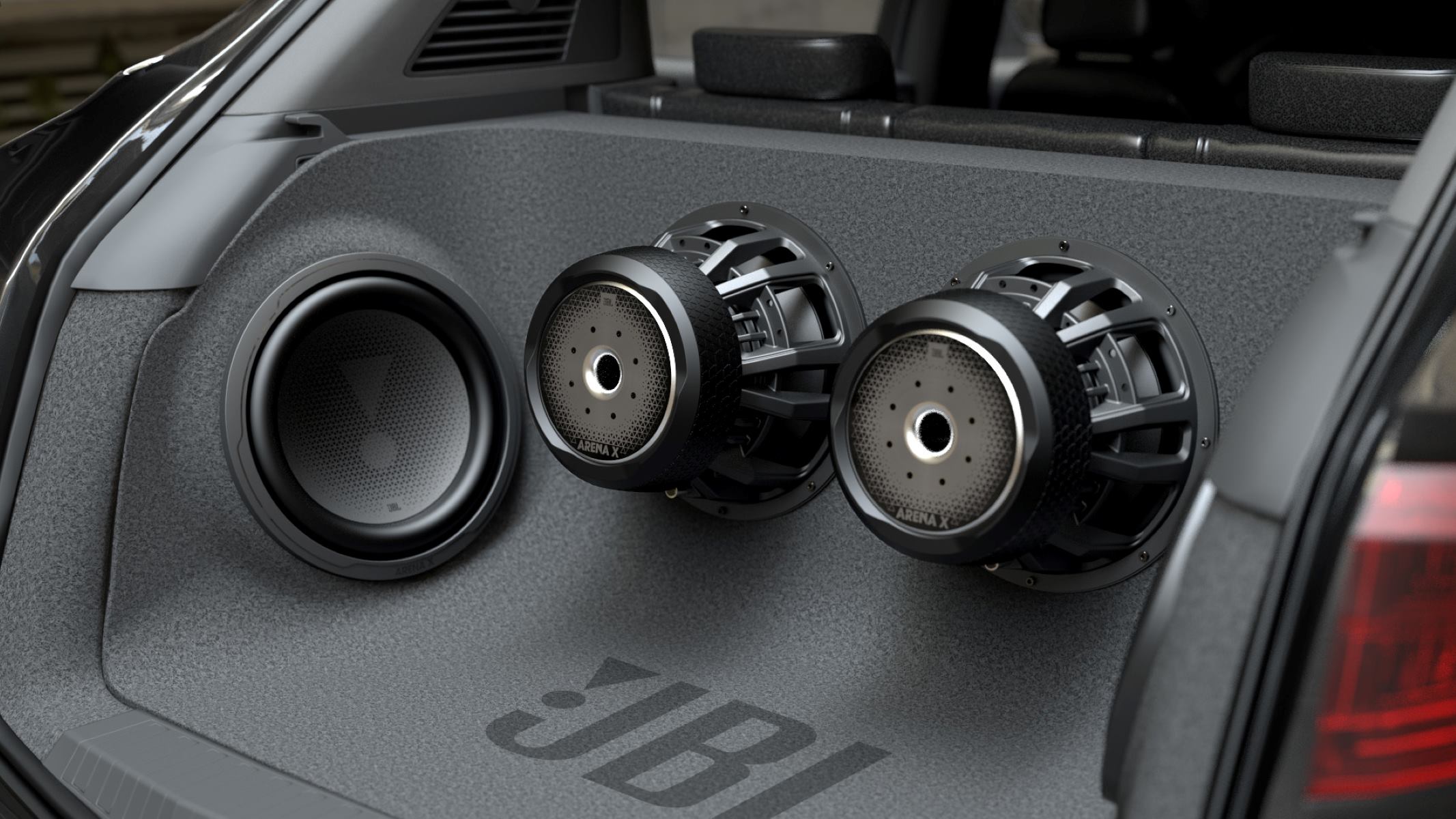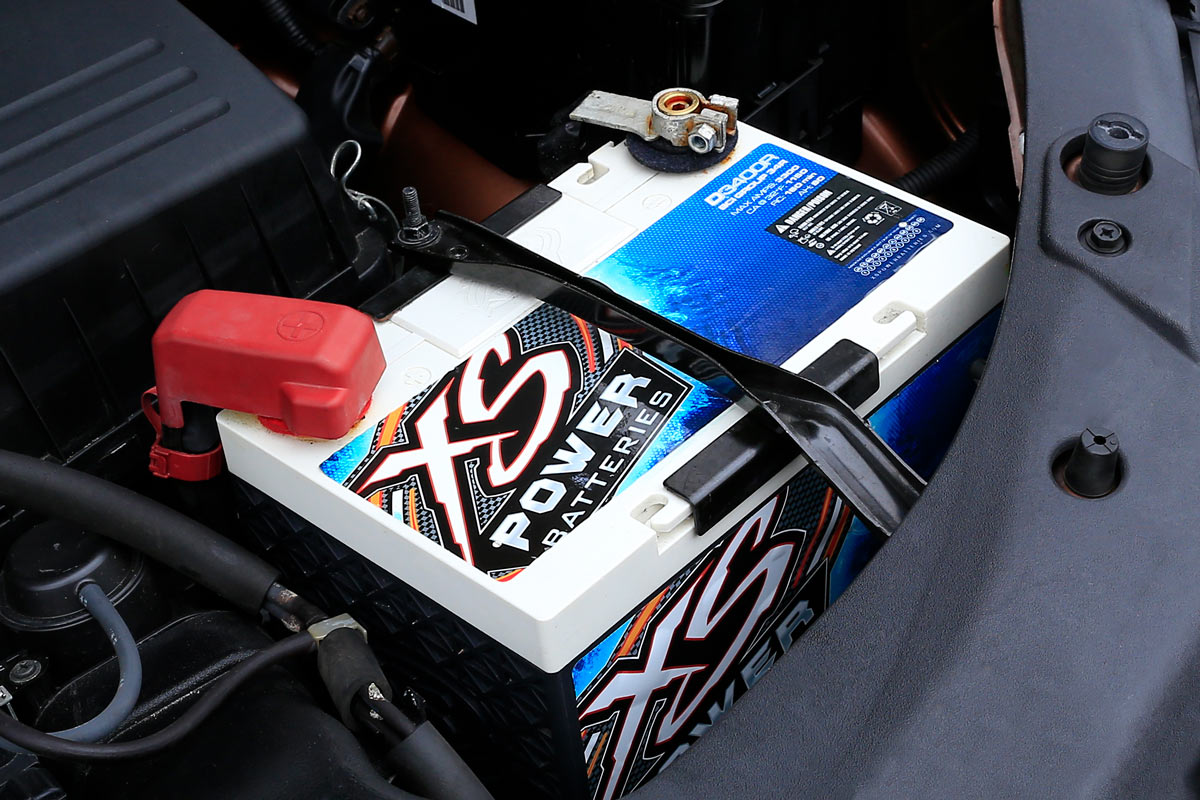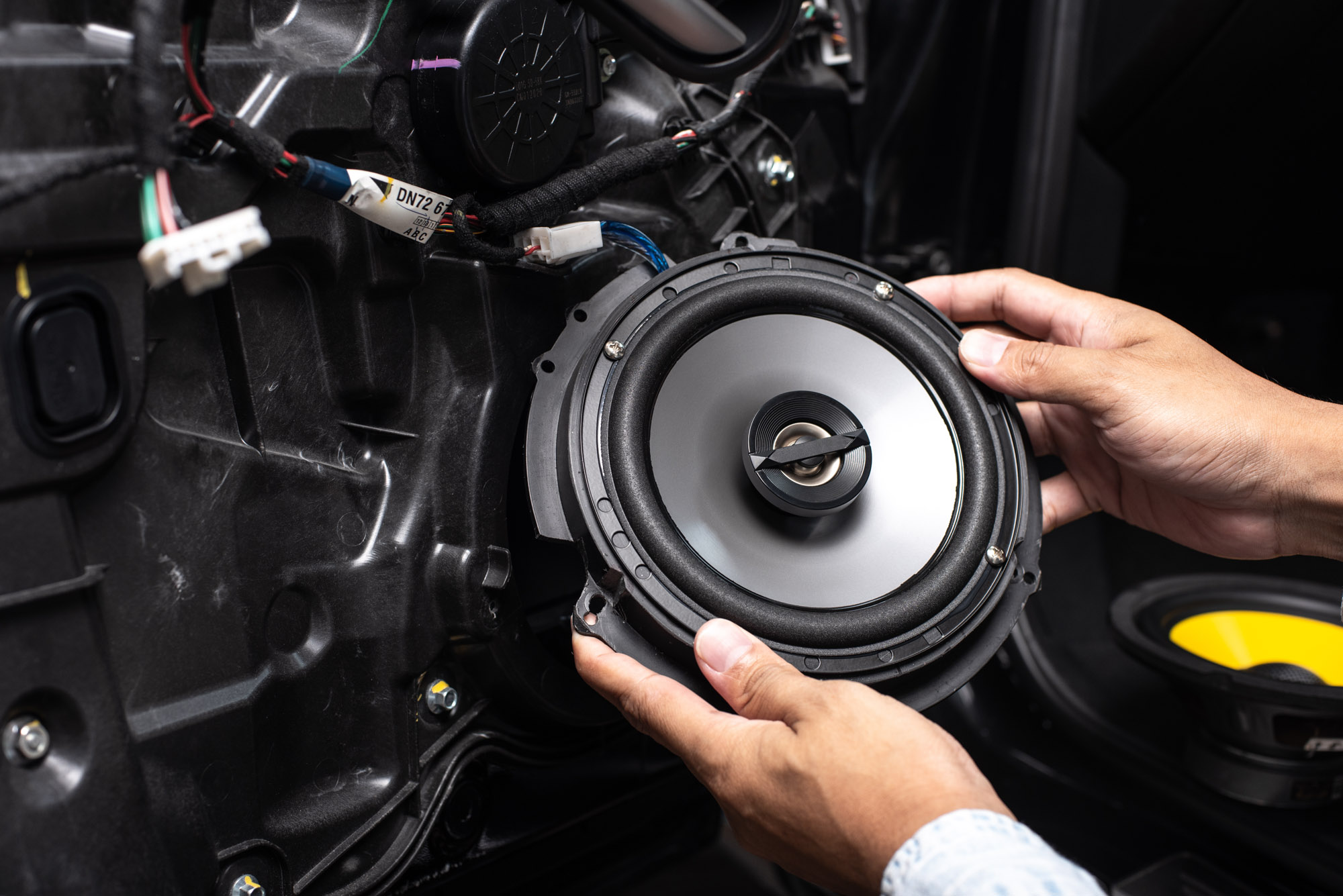Home>Devices & Equipment>Car Audio>What Is The Use Of Amplifier In Car Audio


Car Audio
What Is The Use Of Amplifier In Car Audio
Published: February 6, 2024
Discover the importance of amplifiers in car audio systems. Enhance your car audio experience with the right amplifier for optimal sound quality and performance.
(Many of the links in this article redirect to a specific reviewed product. Your purchase of these products through affiliate links helps to generate commission for AudioLover.com, at no extra cost. Learn more)
Table of Contents
- Introduction
- Basics of Amplifiers
- Amplifier Types
- Importance of Amplifiers in Car Audio Systems
- Enhancing Sound Quality with Amplifiers
- Power Handling and Efficiency
- Choosing the Right Amplifier for your Car Audio System
- Wiring and Installation Tips for Car Amplifiers
- Common Amplifier Issues and Troubleshooting
- Conclusion
Introduction
Welcome to the world of car audio, where music comes alive and your driving experience is taken to a whole new level. One of the key components that make up a stellar car audio system is the amplifier. Whether you’re cruising down the highway or stuck in traffic, a well-designed amplifier can turn your car into a concert hall on wheels, delivering clear and powerful sound reproduction.
So, what exactly is the use of an amplifier in car audio? Simply put, an amplifier is responsible for increasing the power of the audio signal from your car’s head unit and sending it to the speakers. It takes the weak electrical signal from your source unit and amplifies it to a level that can drive your speakers efficiently and effectively. This amplification process ensures that every beat, every note, and every lyric is reproduced with accuracy and impact.
But why do you need an amplifier when your car already has a built-in amplifier in the head unit? While it’s true that most car stereos come with a built-in amplifier, they are often underpowered and unable to deliver the full potential of your speakers. Adding an external amplifier to your car audio system allows you to take control of your sound and unleash the true potential of your speakers.
Modern car audio systems are designed to deliver an immersive audio experience, and a high-quality amplifier is essential to achieve that. Whether you’re a casual music listener or a hardcore audiophile, investing in a dedicated car amplifier can dramatically elevate your in-car audio experience.
In the next sections, we will dive deeper into the basics of amplifiers, explore the different types of amplifiers available, discuss the importance of amplifiers in car audio systems, and provide tips on choosing the right amplifier for your specific needs. So, buckle up and get ready to discover the fascinating world of car audio amplifiers!
Basics of Amplifiers
Before we delve into the intricacies of amplifiers in car audio, let’s start with the basics. At its core, an amplifier is an electronic device that increases the amplitude or power of a signal. In the context of car audio, this means that an amplifier takes the low-power audio signal from your source unit (such as a CD player or a smartphone) and boosts it to a level that can adequately drive your speakers.
Amplifiers work by using a power supply to convert the incoming voltage into a larger output voltage. This amplification process is achieved using various electronic components, such as transistors or tubes, which have the ability to amplify the electrical signal. These components are carefully designed to handle the power requirements of the audio signal and deliver it to the speakers with minimal distortion and maximum efficiency.
One of the key specifications of an amplifier is its power rating, which is typically measured in watts. This rating indicates the maximum power output that the amplifier can deliver to the speakers. It’s important to match the power rating of the amplifier with the power handling capabilities of your speakers to avoid damaging them.
Amplifiers also feature different channels, which determine the number of speakers they can drive. For example, a 2-channel amplifier can power two speakers, while a 4-channel amplifier can power four speakers. Additionally, there are also mono or monoblock amplifiers that are designed specifically for subwoofers, providing the deep bass response that car audio enthusiasts crave.
Another important consideration is the amplifier’s frequency response, which indicates the range of frequencies it can reproduce. The wider the frequency response, the more accurately the amplifier can reproduce the full spectrum of audio frequencies, resulting in a more balanced and detailed sound.
When it comes to connecting an amplifier to your car audio system, it’s important to understand the difference between line-level inputs and speaker-level inputs. Line-level inputs are typically used when connecting the amplifier to the preamp outputs of your head unit using RCA cables, while speaker-level inputs are used when connecting the amplifier directly to the speaker-level outputs of your head unit.
Now that we have covered the basics of amplifiers, let’s explore the different types of amplifiers available in the next section.
Amplifier Types
When it comes to car audio amplifiers, there are several types available, each with its own unique characteristics and applications. Understanding the different amplifier types can help you make an informed decision when choosing the right amplifier for your car audio system. Let’s take a closer look at some of the most common types:
- Class A Amplifiers: Class A amplifiers are known for their high-quality sound reproduction and low distortion. They use a single power transistor that is always in the active region, ensuring a continuous and smooth sound output. However, class A amplifiers are inefficient and generate a significant amount of heat.
- Class AB Amplifiers: Class AB amplifiers combine the best of both Class A and Class B amplifiers. They have two sets of transistors, where one set handles the positive half-cycle of the audio signal and the other set handles the negative half-cycle. Class AB amplifiers offer a good balance between efficiency and sound quality.
- Class D Amplifiers: Class D amplifiers, also known as digital amplifiers, use a pulse-width modulation (PWM) technique to amplify the audio signal. They switch the power transistors on and off rapidly, resulting in high efficiency and less heat dissipation. Class D amplifiers are popular for powering subwoofers due to their ability to deliver high power in a compact form factor.
- Bridgeable Amplifiers: Bridgeable amplifiers allow you to combine two amplifier channels to power a single speaker or subwoofer. This configuration increases the power output and can provide a significant boost in bass response. Bridgeable amplifiers are a great option for those looking for extra power and versatility.
- Multi-channel Amplifiers: Multi-channel amplifiers are designed to power multiple speakers, typically ranging from 2 channels (stereo) to 6 or more channels (surround sound). They are commonly used in car audio systems that have separate speakers for different frequency ranges, such as tweeters, midrange drivers, and subwoofers.
It’s important to consider your specific audio needs and the configuration of your car audio system when choosing an amplifier type. Each type has its own advantages and disadvantages, so take the time to research and compare before making a final decision.
Now that we’re familiar with the different amplifier types, let’s move on to explore the importance of amplifiers in car audio systems.
Importance of Amplifiers in Car Audio Systems
Amplifiers play a crucial role in car audio systems, and their importance cannot be overstated. They not only enhance the overall sound quality but also provide the power necessary to drive your speakers to their full potential. Let’s take a closer look at the key reasons why amplifiers are essential in car audio systems:
- Power and Volume: Amplifiers provide the necessary power to ensure that your speakers can reach high volume levels without distortion. They help overcome road noise and other external factors, allowing you to enjoy your music, podcasts, or audiobooks even in noisy environments. With an amplifier, you can crank up the volume and feel every beat with clarity and precision.
- Improved Sound Quality: Amplifiers are designed to provide clean and accurate amplification of the audio signal, resulting in improved sound quality. They help eliminate background noise, hiss, and other distortions, allowing you to hear the music as the artist intended. Amplifiers bring out the details and nuances in your favorite tracks, ensuring a rich and immersive listening experience.
- Dynamic Range: An amplifier increases the dynamic range of your audio system by providing ample power for both soft and loud passages in music. This allows for greater contrast between the quietest and loudest parts of a song, making the listening experience more engaging and lifelike.
- Better Bass Response: If you’re a fan of deep, powerful bass, then an amplifier is a must-have. Amplifiers with dedicated subwoofer channels can provide the necessary power to drive your subwoofer, delivering earth-shaking bass that adds depth and impact to your music. A well-designed amplifier ensures that the low-frequency notes are reproduced accurately and with authority.
- Flexibility and Customization: Amplifiers offer flexibility when it comes to configuring your car audio system. With multiple channels, you can allocate power to different speakers, allowing for a more balanced and tailored sound experience. Amplifiers also allow you to fine-tune the sound using various controls, such as gain, crossover, and equalizer settings.
By incorporating an amplifier into your car audio system, you can transform your daily commute or road trips into immersive audio journeys. From improved sound quality to enhanced bass response, amplifiers are the backbone of a high-performance car audio setup.
In the next section, we will explore how amplifiers can further enhance sound quality in car audio systems. So, stay tuned!
Enhancing Sound Quality with Amplifiers
When it comes to achieving exceptional sound quality in your car audio system, amplifiers play a vital role. They have the ability to enhance the overall audio performance and bring out the best in your speakers. Let’s explore how amplifiers can elevate the sound quality in your car audio setup:
- Reduced Distortion: One of the main benefits of using an amplifier is the reduction of distortion in your audio signal. The power provided by the amplifier allows your speakers to operate comfortably within their optimal range, minimizing distortion caused by underpowered signals. With less distortion, you can enjoy cleaner and more accurate sound reproduction.
- Improved Clarity and Detail: Amplifiers have the capability to deliver a higher signal-to-noise ratio, which means that the desired audio signal is amplified while unwanted background noise is minimized. This leads to improved clarity and detail in your music. Whether it’s capturing the delicate nuances of a vocalist or the intricate notes of a guitar solo, amplifiers ensure that every element of the music remains clear and distinct.
- Enhanced Dynamic Range: A high-quality amplifier expands the dynamic range of your audio system. This means that it allows for greater separation between soft and loud sounds, resulting in a more engaging and immersive listening experience. The quietest whispers and the loudest explosions can be reproduced with precision, providing a sense of depth and realism to your music or movies.
- Tighter and Punchier Bass: Amplifiers with dedicated subwoofer channels deliver the power required to drive your subwoofer and produce deep, tight, and punchy bass. By providing clean and controlled bass reproduction, amplifiers enrich the overall audio experience. You’ll feel the impact of bass notes and enjoy a more accurate representation of the low-frequency range.
- Optimized Speaker Performance: By supplying adequate power to your speakers, amplifiers allow them to operate at their full potential. Underpowered speakers can sound weak and lackluster, unable to deliver the desired impact and dynamics. Amplifiers ensure that your speakers receive the power they need to produce rich, full-bodied sound, resulting in an enhanced listening experience.
When selecting an amplifier to improve sound quality, consider factors such as power output, frequency response, and harmonic distortion. It’s important to choose an amplifier that matches the power requirements and impedance of your speakers to achieve optimal results.
By incorporating a high-quality amplifier into your car audio system, you can unlock the full potential of your speakers and enjoy a truly immersive and enjoyable sound experience on the road.
In the next section, we will discuss power handling and efficiency in amplifiers, so be sure to keep reading!
Power Handling and Efficiency
Understanding power handling and efficiency is crucial when it comes to selecting the right amplifier for your car audio system. Let’s delve into these important aspects and how they impact the performance of your audio setup:
Power Handling:
Power handling refers to the maximum amount of power that a speaker or amplifier can handle without getting damaged. It’s important to match the power handling capabilities of your speakers with the power output of your amplifier to ensure a proper and balanced setup. If an amplifier delivers more power than what the speakers can handle, it can result in speaker damage or distortion. On the other hand, if the amplifier doesn’t provide enough power, the speakers won’t reach their full potential.
When evaluating power handling, consider the RMS (Root Mean Square) value, as it indicates the continuous power that the amplifier can deliver to the speakers. It’s recommended to choose an amplifier that can provide around 75-150% of the speakers’ RMS power rating to ensure sufficient headroom and avoid pushing the amplifier to its limits.
Efficiency:
Amplifier efficiency refers to the ability of the amplifier to convert electrical power into useful audio output with minimal waste. A highly efficient amplifier will produce more sound output using less power from the electrical source. This is particularly important in car audio systems, as the available power is limited by the vehicle’s electrical system.
Amplifier efficiency is typically measured as a percentage and can range from 25% to 95% or higher. In general, Class D amplifiers tend to be more efficient compared to Class A or Class AB amplifiers. They achieve higher efficiency by using pulse-width modulation (PWM) to switch the power transistors on and off rapidly, reducing the power loss and heat generation in the amplifier. Using an efficient amplifier not only maximizes the available power but also puts less strain on the car’s electrical system.
It’s important to strike a balance between power handling and efficiency when choosing an amplifier. Consider the power requirements of your speakers, the available electrical power in your vehicle, and your desired sound performance. Selecting an amplifier that matches your needs will ensure optimal sound reproduction and efficient power utilization.
Now that we’ve explored power handling and efficiency, let’s move on to the next section, where we’ll discuss how to choose the right amplifier for your car audio system.
Choosing the Right Amplifier for your Car Audio System
Choosing the right amplifier for your car audio system is a critical step in achieving excellent sound quality and performance. With so many options available, it’s important to consider several factors to ensure a perfect match between your amplifier and the rest of your setup. Here are some key considerations to keep in mind:
- Power Output: Consider the power requirements of your speakers and match them with the power output of the amplifier. Ensure that the amplifier can provide sufficient power to drive your speakers without distortion or damage.
- Amplifier Class: Decide which amplifier class suits your needs and preferences. Class A and Class AB amplifiers are known for their high-quality sound reproduction, while Class D amplifiers offer high efficiency and are ideal for powering subwoofers.
- Number of Channels: Determine the number of channels you require based on your speaker configuration. If you have separate tweeters, midrange drivers, and subwoofers, a multi-channel amplifier may be the best choice. For a simple stereo setup, a 2-channel amplifier will suffice.
- Compatibility: Ensure that the amplifier is compatible with your car’s electrical system and head unit. Check the input voltage requirements and make sure it matches the electrical system of your vehicle.
- Features: Consider additional features such as built-in crossovers, equalizers, and bass boost controls. These features can provide greater flexibility in fine-tuning the sound to your liking.
- Brand and Reputation: Research reputable amplifier brands known for their quality and reliability. Look for customer reviews and feedback on the performance and durability of different amplifier models.
- Budget: Set a budget for your amplifier purchase and look for options within your price range. Keep in mind that investing in a high-quality amplifier can significantly enhance your audio experience and may be worth the additional cost.
Once you’ve identified the amplifier that meets your requirements, consider factors such as warranty, installation ease, and available support. It’s also worth consulting with a car audio professional who can provide expert advice based on your specific needs and preferences.
Remember, the right amplifier should complement your speakers, improve sound quality, and deliver an enjoyable listening experience. Take your time, do your research, and make an informed decision to ensure a harmonious and powerful car audio system.
In the next section, we’ll discuss some wiring and installation tips to help you get the most out of your amplifier. Stay tuned!
Wiring and Installation Tips for Car Amplifiers
Proper wiring and installation are crucial for maximizing the performance and longevity of your car amplifier. Whether you’re a DIY enthusiast or seeking professional help, following these wiring and installation tips will ensure a clean and efficient setup:
- Choose the Right Wiring Kit: Select a wiring kit that matches the power requirements of your amplifier. The kit should include power cables, ground cables, remote turn-on wire, and RCA cables. Ensure that the cables are of sufficient gauge to handle the current draw.
- Locate the Amplifier: Find a suitable location to mount the amplifier. It should be away from moisture, extreme heat, and excessive vibration. Good locations include the trunk, under a seat, or behind a panel. Make sure there is enough airflow around the amplifier to dissipate heat.
- Run Power and Ground Cables: Use separate power and ground cables for the amplifier. Route the power cable directly from the battery to the amplifier, avoiding any interference with other wiring or components. Properly fuse the power cable near the battery to protect the amplifier from electrical faults.
- Connect Remote Turn-On Wire: Connect the remote turn-on wire from the head unit to the amplifier. This wire signals the amplifier to power on/off with the head unit. Ensure a secure connection and avoid routing it next to power or speaker wires to prevent any interference.
- Wire the Speakers: Connect the speaker wires from the amplifier to the respective speakers. Use proper connectors or crimping techniques to ensure a secure and reliable connection. Avoid running speaker wires alongside power cables to minimize the risk of electrical interference or noise.
- Set Gain and Crossover Controls: Adjust the gain and crossover controls on the amplifier to match your speaker system. The gain controls the input sensitivity, while the crossover settings determine the frequency range sent to the speakers. Fine-tune these controls to achieve the desired sound balance.
- Secure and Protect the Wiring: Use zip ties or loom tubing to bundle and secure the wiring. This will prevent any loose cables from interfering with other components or causing rattling noises. Use grommets when passing wires through metal panels to protect them from any sharp edges.
- Test the System: Before finishing the installation, double-check all connections and test the system. Verify that the amplifier powers on/off with the head unit, all speakers are working properly, and there are no signs of distortion, clipping, or overheating.
If you are unsure about any aspect of the wiring and installation process, it’s recommended to consult with a professional car audio installer. They have the knowledge and experience to ensure a safe and efficient setup.
By following these wiring and installation tips, you’ll not only have a well-installed amplifier but also minimize the risk of electrical issues and maximize the performance of your car audio system.
In the final section, we will address common amplifier issues and provide troubleshooting tips. Keep reading to find out more!
Common Amplifier Issues and Troubleshooting
While amplifiers are essential components of car audio systems, they can sometimes encounter issues that impact their performance. Understanding common amplifier problems and knowing how to troubleshoot them can help you resolve issues and get your system back up and running. Here are some of the most common amplifier issues and their possible solutions:
- No Power: If your amplifier isn’t powering on, check the power connections. Ensure that the power cable is properly connected to the battery and the ground cable is securely connected to a metal point on the vehicle’s chassis. Also, check the remote turn-on wire connection to the head unit.
- Distortion or Noise: Distortion or noise can be caused by a number of factors. Check the speaker connections to ensure they are securely connected and free from any damage. Adjust the gain settings on the amplifier to prevent signal clipping. Additionally, inspect the RCA connections for any loose or damaged cables.
- Overheating: Amplifiers can overheat due to inadequate ventilation or driving them beyond their specified power limits. Ensure that the amplifier is mounted in a location with proper airflow and is not obstructed. Avoid playing music at excessively high volumes for an extended period of time to prevent overheating.
- Protection Mode: Sometimes, amplifiers can go into protection mode to prevent damage. This can occur due to issues like a short circuit, low impedance, or overheating. Check the wiring and connections for any faults or loose connections. If the issue persists, consult a professional to diagnose and repair the amplifier.
- Poor Bass Response: If you’re experiencing weak or muddy bass, check the subwoofer connections and ensure that the amplifier’s low-pass crossover is set correctly. Adjust the bass boost or equalizer settings to enhance the bass response. Additionally, check the enclosure and subwoofer placement for optimal performance.
- Weak Sound Output: If your amplifier is not delivering sufficient power to your speakers, check the gain settings to ensure they are properly adjusted. Verify that the amplifier’s output is correctly connected to the speakers and that the speaker impedance is compatible with the amplifier. If needed, consider upgrading to a more powerful amplifier.
If you encounter any issues with your amplifier that you are unable to troubleshoot, it’s recommended to seek assistance from a professional car audio technician. They have the expertise to diagnose and resolve complex amplifier problems effectively.
By addressing common amplifier issues promptly and correctly, you can ensure optimal performance and longevity of your car audio system.
Now that we’ve covered common amplifier issues, let’s summarize our key points in the concluding section.
Conclusion
Amplifiers are a vital component of car audio systems, providing the necessary power and enhancing the sound quality of your speakers. From boosting volume and improving clarity to delivering deep, powerful bass, amplifiers play a crucial role in creating a captivating in-car audio experience.
Understanding the basics of amplifiers, including their types and power handling capabilities, is essential when choosing the right amplifier for your car audio system. By considering factors such as power output, amplifier class, and number of channels, you can ensure a harmonious setup that meets your audio needs.
Installing an amplifier properly is equally important to maximize its performance. Wiring the amplifier correctly, providing adequate power and ground connections, and troubleshooting common issues will ensure optimal sound reproduction and prevent any potential problems down the line.
By investing in a high-quality amplifier and integrating it into your car audio system, you can elevate your driving experience with immersive and dynamic sound quality.
Remember, the key to a successful car audio setup lies in finding the right balance between the amplifier, speakers, and other components. Whether you’re a casual listener or a true audiophile, a well-designed amplifier will transform your car into a concert hall on wheels.
So, go forth, select the perfect amplifier, wire it properly, and enjoy the incredible sound that will make every journey a musical adventure!

